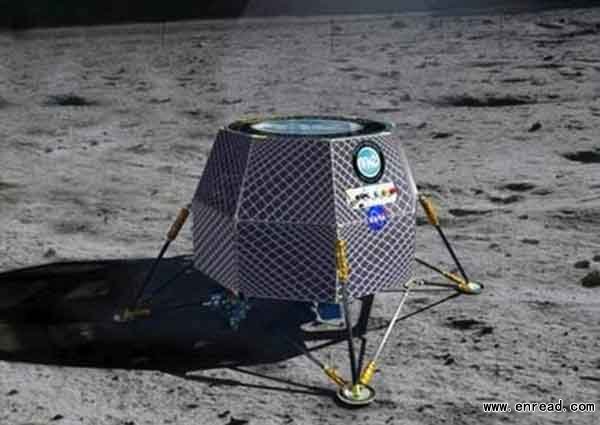|
  
- UID
- 86155
- 帖子
- 60350
- 积分
- 64892
- 学分
- 591606 个
- 金币
- 810 个
- 性别
- 男
- 在线时间
- 2779 小时

|
|
Nasa is to try growing vegetables and herbs on the moon to see if humans could one day live there.
美国国家航空航天局决定在2015年去月球上种植蔬菜和草本植物,以此来测试月球是否适合人类生存。

The seeds will be sent to the moon in the Moon Express Lander (illustrated here by computer generation) in 2015
The US space agency plans to send seeds to the moon in 2015 in sealed
canisters(容器)
containing everything that is needed for the seedlings to thrive.
As well as ten seeds each of basil and
turnips(芜菁), there will also be around 100 seeds of Arabidopsis, a small flowering plant related to cabbage and mustard.
On landing, a trigger will release a small reservoir of water inside the canister and a team on Earth will monitor how the seeds
germinate(发芽,生长)
when exposed to lunar gravity and radiation.
A group of scientists, students and volunteers - known as the Lunar Plant Growth Habitat team - are behind the project which will see the seedlings photographed at intervals to compare with those planted on earth.
The air in the sealed containers should be adequate for more than 5 days of growth.
A Nasa spokesman said: 'They can test the lunar environment for us, acting as a canary in a coal mine.
'If we send plants and they thrive, then humans probably can.'
Thriving plants need the same ingredients for life as humans – food, water and air – and also provide psychological comfort for people, demonstrated by the popular greenhouses in Antarctica and the International Space Station.
Nasa plans on sending the seedlings to the moon by hitching a lift on a commercial spacecraft called the Moon Express lander, which is competing to win Google's Lunar X-Prize in 2015.
Scientists are currently constructing a unit to study the germination of the plants, which will have a mass of just one kilogram and will be deposited on the moon.
Water will be added to the seeds in the module after landing and their growth will be monitored for five to 10 days and compared to Earth-based control seedlings.
Seeds will include Arabidopsis, basil, and turnips and Nasa says the experiment will be the first of its kind on another world and 'an important first step in the utilisation of plants for human life support'.
Follow-up experiments will improve the technology in the growth module and allow for more extensive plant experiments, the organisation said.
Survival for 14 days demonstrates plants can sprout in the moon's radiation environment but survival to 60 days demonstrates that sexual reproduction (meiosis) can occur in a lunar environment.
Survival to 180 days shows effects of radiation on dominant and recessive genetic traits and afterwards, the experiment may run for months through multiple generations, increasing science return.
更多英语新闻 |
|